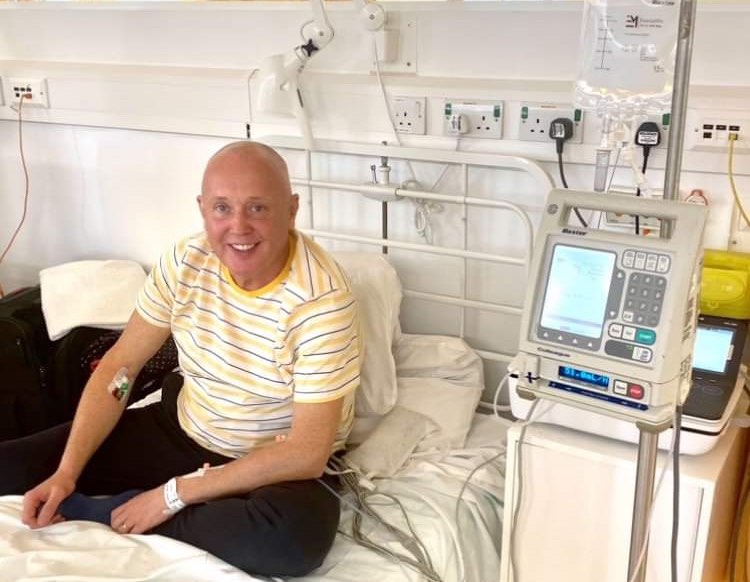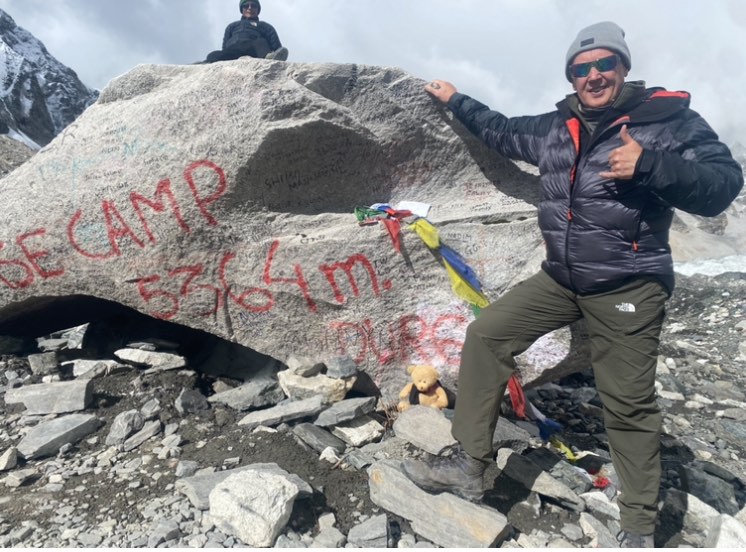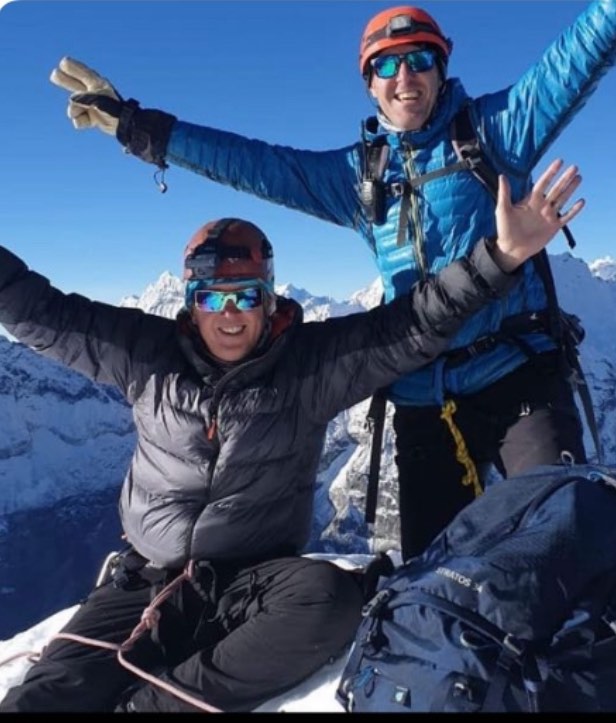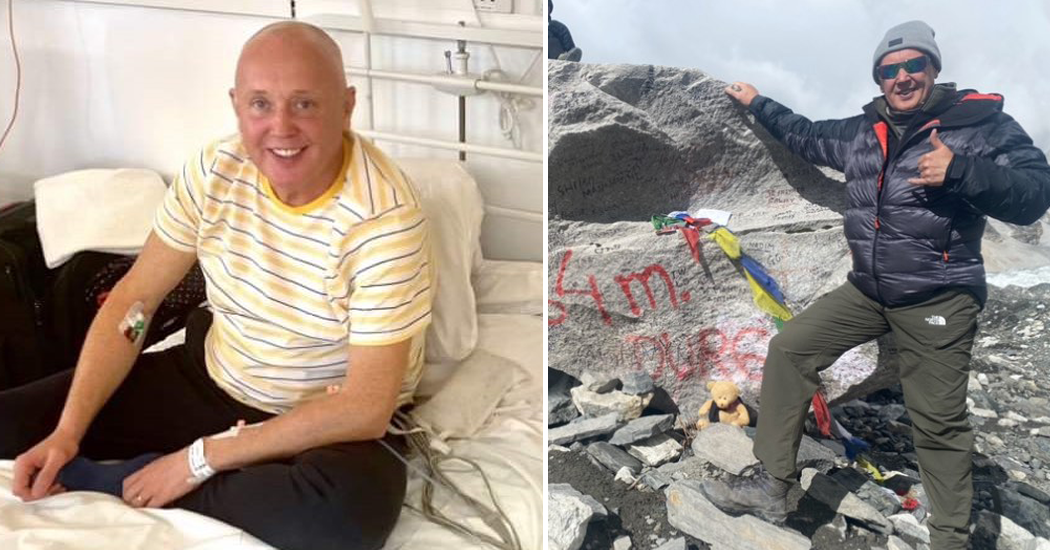Your health is your wealth, and Letterkenny accountant James Green has spent 2023 counting his blessings.
James crowned his year with an incredible expedition to Everest Base Camp. The climb to the summit of Island Peak, a mammoth 6,189m elevation, brought home to James how fortunate he was.
Just three years previously, he was diagnosed with a variant of the rare condition Amyloidosis, also known as Donegal Amy.
Until a few years ago, there was no treatment for Hereditary Amyloidosis. Thankfully awareness is growing, as well as the research into treatment options.
Soon after his diagnosis, James decided to enrol in a gene-editing trial in the UK aimed at deactivating the rogue gene that causes the condition.
“I wanted to be part of the solution,” he said. “It was a fantastic opportunity to help find a cure for the condition, for myself and for others.”
James’ second infusion of the CRISPR treatment in May has shown promising results. Tests showed that the treatment wiped out the misshapen transthyretin protein produced in his liver, the very protein that causes the build-up of harmful amyloid in patients’ hearts and nervous systems.

James in London during his second Crispr infusion in May 2023
The results gave James the confidence to strive for one of his greatest life goals – trekking the Himalayas.
“It was in London for a routine follow-up last year when I asked the team if I could go to base camp. They said no problem, and that set off the journey,” he said.
James joined forces with Donegal mountaineer Jason Black to undertake the thrilling expedition.
He had already climbed Kilimanjaro in 2015 for his 50th birthday. However, there was a bittersweet element to that expedition.
“I did it in the knowledge that I better not leave it too late, given my family history of early onset amyloidosis, I thought I might not get the opportunity to journey into the mountains again,” he said.
Seven years on, James’ expedition to the Himalayas in October brought home how far he had come.
“It was always to the forefront of my thoughts how fortunate I was to be there,” he said.
“It was a magical turnaround in just two years from having no treatments, to being on the CRISPR trial, to having the TTR level reduced to an undetectable level and then to being able to travel the Himalayas for the best part of three and a half weeks.”

James on the Everest Base Camp trek, led by Jason Black
According to James, reaching the Everest Base Camp wasn’t too difficult. However, conquering the Island Peak was a much more arduous journey.
“When you get to the top, the thought is I’m here, and now I have to get back down again!” he recalls.
“It was magical and very special and exhilarating.”


It is these unique experiences and the gratitude that drive James to register for such expeditions.
“It’s fantastic to lose yourself in these remote cultures, meeting different people who are so welcoming. Every day is a challenge on these trips, you are taking each day as it comes. Every day is a success when your oxygen readings are up there in the +85% mark. Having the health goes in tandem with that,” he said.
“I am just so fortunate, there is only a very small number of people who have benefitted from gene editing, and I don’t require any ongoing treatment. All I have to take daily is a Vitamin A tablet.”
James is always conscious of his predecessors who fell victim to the disease.
“When my aunt Polly was sick in 1982, people didn’t know what happened to her. But Polly was a nurse and she knew that whatever she had, her grandmother had it too,” he said.
“I know it came down through the family tree, which is why I decided to get tested for the amyloidosis gene in 2020.
“For some people it can be a scary thought but I would encourage people to go ahead and get a genetic test as early as possible. If you have the gene, you can keep a watch on it, if not, it can be ruled out for future generations. Life is there to be lived and don’t let things get in your way.”

James on the Everest Base Camp trek, led by Jason Black
It’s estimated that 1% of Donegal’s population could be a carrier of the mutation that results in ‘Donegal Amy’.
Worldwide, there 130 variants of hereditary amyloidosis have been observed. An estimated 50,000 people globally are affected by various forms.
James said that early detection made all the difference to his life.
“This Christmas, while families are together, perhaps we can encourage the conversation of people talking about their genetic history and getting tested.”
His hope for the years to come is the continued development of therapies for patients diagnosed with hereditary amyloidosis.
“It’s an area that is getting a lot of attention. It could be a small lifetime before these drugs become available on the open market but the years go by quickly. It’s important we advocate for our own best treatment.”
James is eagerly planning more adventures and accomplishments in 2024. He has signed up for the Dublin marathon and hopes to plan another expedition.
His New Year wishes?
“Health and happiness and get back to the Himalayas.”
To find out more about ATTR amyloidosis, visit amy.ie or follow the Facebook page: www.facebook.com/AmyloidosisIreland
Tags:








